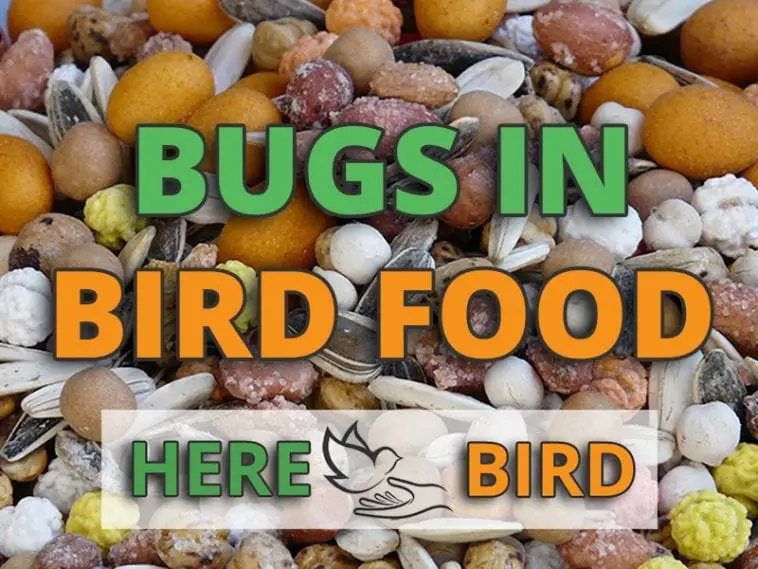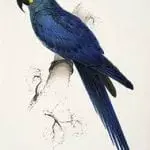As a pet owner, we don’t want to see any bugs in the food of our pet that may expose our very dear pets to an insect infestation. This is the last thing, or should we say that we don’t want to find if we open the container in the food of our pet.
We also don’t want to waste by replacing that decayed food, which most of us pet owners would rather keep away from. This issue can have an effect on pet owners as well as other pet lovers that allow the food to remain in an outdoor feeder. Now we take a look at those types of bugs that you may usually encounter in your pet food, what is the reason why they become visible, and what are the methods on how you can lessen the chances of encountering this situation.
Different Kinds of Bugs that Seen in Bird Food
The bugs are usually seen when we purchased a seed that plays as food to our pet. It seems that the bugs have resided in that seed. The larvae of the insect can get into it by the use of seed bags that we usually purchased, and they even hatch their eggs when we are about to use it. The following are the most usual kinds of insects and those we often have seen that taking over to our pet food:
1. Pantry Moth

The pantry moth or also known as the Indian meal moth, is assessing to be the most annoying pest insect that infesting any stored products, including the whole grains, any cereal products, dried fruits, and even pet foods that you give to your pet.
This moth may also appear while the seed is still processing or after you have purchased it and bring it into your home. The pantry moths place their eggs in the seed where the place that larvae are fed until it turns up to be as adult moths. It looks like a little worm that has a color black in its head. The adult pantry moths usually fly in the dark area, and these kinds of insects will go into any other food in your home that you may not even notice. But if you have seen a fine web in the food containers in your storage area, there’s a high probability that there is a pantry moth in it.
2. Weevils

The Granary and rice weevils are a bug pest that forces away through a whole grain during the larvae period. It is usually known as snout weevils. The annoyance usually happens in the grain storage earlier than the seed is about to produced as bird food. They have not become visible until they become small adults that usually leave through the hole in a grain.
They don’t bite a human, they are not considered to be harmful, but once the food is already infested by these insects, the food may surely be thrown away. These types of insects usually move from birdseed into a bean that placed in the pantry. The infestation in these insects is be inclined to think if the adult weevils leave the grain into a small hole in it. You may use some flashlight to observe the birdseed if there are any adult weevils that can be seen.
3. Maize Weevil
This insect is usual in bird seeds. The adult maize weevil looks like a reddish-brown or black in its color that has a long snout. They infest the birdseed easily, and they usually infest the cornmeal and even the beans in the home pantry.
4. Cigarette Beetle
These small and oval insects usually love to eat any tobacco products, but they also feed with cereals, pasta, and even bird seeds. They usually enjoy and seen flying in low light. Any birdseed that is infested by these kinds of insects is required to be immediately thrown away before it takes over the whole household foods.
5. Ants or Any Other Kinds of Insects
Regardless of the hard work that you are doing to clean the food of your pet, insufficient storage can still lead to an infestation of the food by any different kinds of insects.
Basic Methods to Get Rid of Bugs in Your Birdseed

- Make use of an airtight storage or food containers to keep your bird food defrost. By doing so, it will avoid the bugs to enter the birdseed and may add an extra layer of cleanliness to it.
- Dispose of the old food that is open and not consumed to avoid the infestation to spread, especially in birdseed that you are currently using.
- Put the unopened food in a freezer. This method will help kill any eggs about to present in birdseed. You may use freezer bags to store them in your refrigerator.
- Clean the cage of your pet, toys, and even its perches. Just in case any of the bugs egg has already spread anywhere around your house, cleaning your birdcage is highly recommended. You may use a bird-safe spray for cleaning your pet’s cage.
- Purchased new birdseed for your pet. If all of the old food is already infested by the insect, you may replace the food with a portion of new standard food. When you buy new food, make sure that the storage is secured enough so that it may not infest any kind of insect. There is bird food that sold with vacuum-packed, and it’s is known to be very efficient in securing among bugs.
- Pantry moth can be killed through the help of heating. You may microwave your bird food, and then it kills the insect that is inside it.
- Try to set up some non-toxic traps for insects.
Other safety measures that include not purchasing an open bag of bird food and securing the freshness of the food’s expiry date could be more manageable with some well-packed and commercial products. Awareness is required when purchasing a loose bird-food at any pet store as most commonly infected by insects.
There are also some other ways to avoid any birdseed moths. If you bring any pet food in your home, try to freeze it first for at least 72 hours to get rid of any larvae that may be residing inside of that food. Then store the bird food in an airtight container and let it keep in a cool and dry place.
Treatment
Usually, almost all of the insects can multiply quickly in a small range of time, as a pet owner, you may surely don’t want to spray in your pet’s food with any pesticide to kill those moths because pesticides are known to be dangerous in your pet. As an alternative, if you notice that there are seed moths in the food of your pet, just clean and vacuum it in every nook of the container.
Conclusion
The greatest method to keep your pet’s food insect-free is just making the required ways for avoidance. Bugs in bird seeds can be treated as long as you perform a proper assessment. In this way, you’ll keep your bird healthy and happy at all times.


